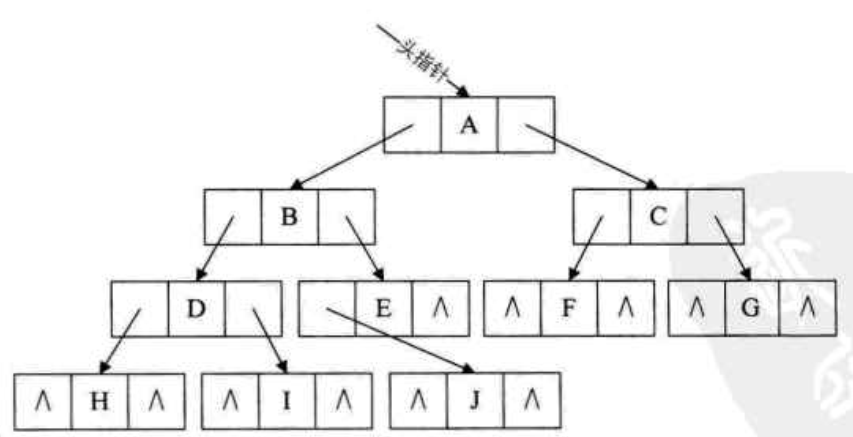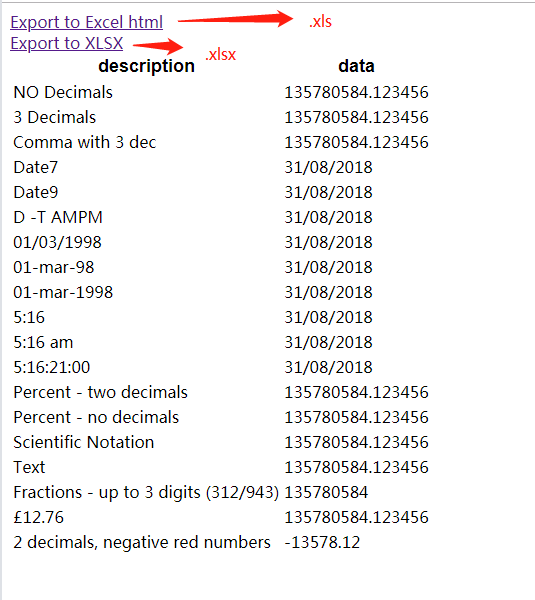缓存方式幂等性工具、消息队列方式幂等性工具、检测客户端服务端是否在线
1、缓存方式幂等性工具
import cn.hutool.core.util.IdUtil;import com.alibaba.fastjson.JSON;import org.apache.commons.lang3.StringUtils;import org.springframework.beans.factory.annotation.Autowired;import org.springframework.data.redis.core.StringRedisTemplate;import java.util.concurrent.TimeUnit;/** * 通过唯一ID判断数据是否存在 * 主要逻辑 存入数据不通过mysql主键进行做唯一标识, * 采用redis天然的幂等性,插入数据进行存储唯一标识,如果插入数据进行判断存在,不进行插入数据 */public class IdentityHash {@Autowiredprivate StringRedisTemplate stringRedisTemplate;/** * 将对象存入缓存中 * @param obj 对象数据 * @param timeout 超时时间 */public void set(Object obj, long timeout) {if (obj instanceof String) {stringRedisTemplate.opsForValue().set(JSON.toJSONString(System.identityHashCode(obj)), IdUtil.randomUUID(), timeout, TimeUnit.MILLISECONDS);return;}stringRedisTemplate.opsForValue().set(JSON.toJSONString(System.identityHashCode(obj)), IdUtil.randomUUID(), timeout, TimeUnit.MILLISECONDS);}/** * 根据Key查询缓存中的数据 * @param key * @return */public String get(final String key) {if (StringUtils.isEmpty(key)) {return null;}return stringRedisTemplate.opsForValue().get(key);}/** * 根据key删除缓存数据 * @param key */public void delete(String key) {stringRedisTemplate.delete(key);}/** * 查询缓存是否存在 * @param checkCase * @return */public boolean checkForm(String checkCase){String cacheValue = get(checkCase);/**如果查询缓存不为空,返回true*/if (StringUtils.isNotEmpty(cacheValue)){return true;}return false;}}
2、消息队列方式幂等性工具
import com.alibaba.fastjson.JSON;import com.rabbitmq.client.Channel;import lombok.Data;import lombok.extern.slf4j.Slf4j;import org.springframework.amqp.core.AmqpTemplate;import org.springframework.amqp.core.Message;import org.springframework.amqp.rabbit.annotation.RabbitHandler;import org.springframework.amqp.rabbit.annotation.RabbitListener;import org.springframework.beans.factory.annotation.Autowired;import org.springframework.stereotype.Service;import java.io.IOException;@Slf4j@Servicepublic class AmqpHash {@Autowiredprivate AmqpTemplate amqpTemplate;/** * 发送消息 * * @param queueName 队列名称 */public void send(String queueName, Object obj) {Messages messages = new Messages();messages.setObj(obj);messages.setMessageId(String.valueOf(System.identityHashCode(obj)));amqpTemplate.convertAndSend(queueName, JSON.toJSONString(messages));}@RabbitHandler@RabbitListener(queues = "queue", concurrency = "1")public void process(String msg, Message message, Channel channel) throws IOException {log.debug("消费者接收到的消息 :{}, 来源:{} 时间:{}", msg, channel.getChannelNumber(), System.currentTimeMillis());try {if(msg.contains("5")){throw new RuntimeException("抛出异常");}log.info("消息{}消费成功",msg);//消息Idmessage.getMessageProperties().getMessageId();channel.basicAck(message.getMessageProperties().getDeliveryTag(), true);} catch (Exception e) {log.error("接收消息过程中出现异常,执行nack");//第三个参数为true表示异常消息重新返回队列,会导致一直在刷新消息,且返回的消息处于队列头部,影响后续消息的处理channel.basicNack(message.getMessageProperties().getDeliveryTag(), false, false);log.error("消息{}异常",message.getMessageProperties().getHeaders());}}@Datastatic class Messages{private Object obj;private String messageId;private String uuid;}}
3、检测客户端服务端是否在线
一、服务端:
import io.netty.bootstrap.ServerBootstrap;import io.netty.channel.*;import io.netty.channel.group.ChannelGroup;import io.netty.channel.group.DefaultChannelGroup;import io.netty.channel.nio.NioEventLoopGroup;import io.netty.channel.socket.SocketChannel;import io.netty.channel.socket.nio.NioServerSocketChannel;import io.netty.handler.codec.DelimiterBasedFrameDecoder;import io.netty.handler.codec.Delimiters;import io.netty.handler.codec.string.StringDecoder;import io.netty.handler.codec.string.StringEncoder;import io.netty.handler.timeout.IdleStateEvent;import io.netty.handler.timeout.IdleStateHandler;import io.netty.util.concurrent.GlobalEventExecutor;import lombok.extern.slf4j.Slf4j;import java.util.concurrent.TimeUnit;/** * 启动服务端服务 * 需要开启一个新的线程来执行netty 服务端 或者客户端 * ThreadUtil.execute(() -> { * Server.initServer(); * Client.initClient(); * }); */@Slf4jpublic class Server {/** * 装有所有客户端channel的组 */private static ChannelGroup channelGroup = new DefaultChannelGroup(GlobalEventExecutor.INSTANCE);static class ServerHeader extends SimpleChannelInboundHandler<String> {@Overrideprotected void channelRead0(ChannelHandlerContext ctx, String msg) {Channel channel = ctx.channel();//循环channel组,判断是不是其它客户端发送的消息channelGroup.stream().forEach(ch -> {if (channel != ch) {ch.writeAndFlush(channel.remoteAddress() + "---发送的消息为:" + msg + "\n");} else {ch.writeAndFlush("【自己的消息】" + msg + "\n");}});}/** * 用户事件触发方法 判断事件 * * @param ctx 上下文对象 * @param evt 事件对象 */@Overridepublic void userEventTriggered(ChannelHandlerContext ctx, Object evt) {//判断该事件是否为超时事件if (evt instanceof IdleStateEvent) {IdleStateEvent event = (IdleStateEvent) evt;String type;//判断具体事件 具体项目可以根据不同情况进行不同处理switch (event.state()) {case READER_IDLE:type = "读空闲";break;case WRITER_IDLE:type = "写空闲";break;default:type = "读写空闲";}log.info("%s==超时事件==%s\n", ctx.channel().remoteAddress().toString(), type);ctx.channel().close();}}@Overridepublic void handlerAdded(ChannelHandlerContext ctx) {Channel channel = ctx.channel();//通知其它客户端channelGroup.writeAndFlush("【服务端:】" + channel.remoteAddress() + "加入\n");channelGroup.add(channel);}@Overridepublic void channelActive(ChannelHandlerContext ctx) {Channel channel = ctx.channel();log.info("【客户端:】" + channel.remoteAddress() + "上线\n");}@Overridepublic void channelInactive(ChannelHandlerContext ctx) {Channel channel = ctx.channel();log.info("【客户端:】" + channel.remoteAddress() + "下线\n");}@Overridepublic void channelUnregistered(ChannelHandlerContext ctx) {Channel channel = ctx.channel();channelGroup.writeAndFlush("【客户端:】" + channel.remoteAddress() + "离开\n");//此处不用从组中一处,掉线之后netty会自动的从组中移除}}static class ServerInit extends ChannelInitializer<SocketChannel> {@Overrideprotected void initChannel(SocketChannel socketChannel) {ChannelPipeline pipeline = socketChannel.pipeline();//添加处理器,netty通过解决不同的情景来添加不同的处理器pipeline.addLast(new DelimiterBasedFrameDecoder(4096, Delimiters.lineDelimiter())).addLast(new StringDecoder()).addLast(new StringEncoder()).addLast(new IdleStateHandler(100,200,300, TimeUnit.SECONDS)).addLast(new ServerHeader());}}/** * 初始化 */public static void initServer(){EventLoopGroup bossGroup = new NioEventLoopGroup();EventLoopGroup workerGroup = new NioEventLoopGroup();try {ServerBootstrap serverBootstrap = new ServerBootstrap();serverBootstrap.group(bossGroup,workerGroup).channel(NioServerSocketChannel.class).childHandler(new ServerInit());// 端口可以自定义ChannelFuture channelFuture = serverBootstrap.bind(8899).sync();channelFuture.channel().closeFuture().sync();} catch (Exception e){log.error("初始化失败:{}",e);} finally {bossGroup.shutdownGracefully();workerGroup.shutdownGracefully();}}}
二、客户端:
import cn.hutool.cron.CronUtil;import cn.hutool.cron.task.Task;import io.netty.bootstrap.Bootstrap;import io.netty.channel.*;import io.netty.channel.nio.NioEventLoopGroup;import io.netty.channel.socket.SocketChannel;import io.netty.channel.socket.nio.NioSocketChannel;import io.netty.handler.codec.DelimiterBasedFrameDecoder;import io.netty.handler.codec.Delimiters;import io.netty.handler.codec.string.StringDecoder;import io.netty.handler.codec.string.StringEncoder;import lombok.extern.slf4j.Slf4j;import java.io.BufferedReader;import java.io.ByteArrayInputStream;import java.io.IOException;import java.io.InputStreamReader;/** * 启动客户端服务 * 需要开启一个新的线程来执行netty 服务端 或者客户端 * ThreadUtil.execute(() -> { * Server.initServer(); * Client.initClient(); * }); */@Slf4jpublic class Client {static class ClientHeader extends SimpleChannelInboundHandler<String> {@Overrideprotected void channelRead0(ChannelHandlerContext channelHandlerContext, String msg) {log.info("服务端消息:" + msg);}}static class ClientInit extends ChannelInitializer<SocketChannel> {@Overrideprotected void initChannel(SocketChannel socketChannel) {ChannelPipeline pipeline = socketChannel.pipeline();//添加处理器,netty通过解决不同的情景来添加不同的处理器pipeline.addLast(new DelimiterBasedFrameDecoder(4096, Delimiters.lineDelimiter())).addLast(new StringDecoder()).addLast(new StringEncoder()).addLast(new ClientHeader());}}/** * 初始化客户端 */public static void initClient(){EventLoopGroup eventLoopGroup = new NioEventLoopGroup();try {Bootstrap bootstrap = new Bootstrap();bootstrap.group(eventLoopGroup).channel(NioSocketChannel.class).handler(new ClientInit());//获得channel对象Channel channel = bootstrap.connect("localhost", 8899).sync().channel();// 支持秒级别定时任务CronUtil.setMatchSecond(true);CronUtil.start();CronUtil.schedule("*/2 * * * * *", (Task) () -> {String str = String.valueOf(System.currentTimeMillis());BufferedReader br = new BufferedReader(new InputStreamReader(new ByteArrayInputStream(str.getBytes())));try {channel.writeAndFlush(br.readLine() + "\r\n");} catch (IOException e) {log.error("通道已关闭:{}",e);}});} catch (Exception e) {log.info("启动客户端失败:{}",e);} finally {eventLoopGroup.shutdownGracefully();}}}
三、springboot方式启动:
import cn.hutool.core.thread.ThreadUtil;import com.imooc.stream.utils.Client;import com.imooc.stream.utils.Server;import lombok.extern.slf4j.Slf4j;import org.springframework.boot.CommandLineRunner;import org.springframework.boot.SpringApplication;import org.springframework.boot.autoconfigure.SpringBootApplication;import org.springframework.boot.builder.SpringApplicationBuilder;import org.springframework.boot.web.servlet.support.SpringBootServletInitializer;@Slf4j@SpringBootApplicationpublic class StreamApplication extends SpringBootServletInitializer implements CommandLineRunner {public static void main(String[] args) {SpringApplication.run(StreamApplication.class, args);}/** * 支持使用外置的tomcat启动 * @param application * @return */@Overrideprotected SpringApplicationBuilder configure(SpringApplicationBuilder application) {log.info("启动加载自定义的ServletInitializer");return application.sources(StreamApplication.class);}@Overridepublic void run(String... args) {log.info("启动成功, 同时启动netty服务");//需要开启一个新的线程来执行netty 服务端 或者客户端ThreadUtil.execute(() -> {Server.initServer();Client.initClient();});}}



































还没有评论,来说两句吧...